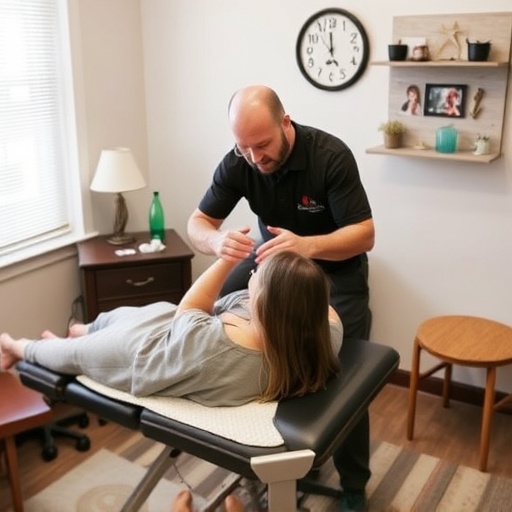Military injury treatment goes beyond initial care with a holistic, long-term strategy focusing on rehabilitation and resilience. This involves chiropractic care, personalized exercise regimes, ergonomic guidance, physical therapy, and chronic pain management to prevent recurring injuries, strengthen service members' bodies, and improve their overall well-being post-service.
Military injury treatment goes beyond immediate care; it’s a comprehensive strategy to fortify service members against future harm. By understanding the unique risks faced on the battlefield, specialized therapies target specific injuries prevalent among military personnel. This proactive approach not only enhances recovery but also builds resilience, preparing warriors for potential challenges. Through long-term care and rehabilitation programs, military injury treatment fosters physical and mental strength, ensuring a robust defense against recurring injuries. Discover how these strategies prevent and mitigate future harm in this comprehensive guide.
- Understanding Military Injury Treatment: A Foundation for Prevention
- Targeted Therapies: Addressing Specific Injury Risks
- Long-Term Care and Rehabilitation: Building Resilience Against Future Injuries
Understanding Military Injury Treatment: A Foundation for Prevention

Military injury treatment goes beyond immediate care; it’s a cornerstone for preventing future injuries among service members. By understanding and leveraging military injury treatment principles, healthcare providers can develop personalized treatment plans that address not just the symptoms but also the underlying causes of injuries. This holistic approach ensures that service members not only recover but also regain strength and resilience to better withstand the physical demands of their roles.
Through specialized techniques like chiropractic care, which has proven effective in managing back pain relief, military injury treatment offers a comprehensive strategy. Personalized treatment plans tailored to individual needs play a crucial role in preventing recurring injuries. These plans often incorporate exercise regimes, postural training, and ergonomic guidance, empowering service members with the tools needed to maintain health and prevent future personal injuries.
Targeted Therapies: Addressing Specific Injury Risks

Military injury treatment goes beyond immediate care; it’s a proactive approach to prevent future injuries. Targeted therapies are tailored to address specific risks associated with military service, such as repetitive motion injuries common in certain roles or the unique physical demands of combat training. These treatments can include specialized exercises, manual therapy, and advanced technology for pain management, like those offering pinched nerve relief or neck pain treatment. By focusing on these targeted interventions, service members can regain strength, improve flexibility, and develop resilience to prevent future injuries that could sideline their careers.
Furthermore, physical therapy plays a crucial role in this process. It not only helps heal existing injuries but also strengthens muscles and improves posture, reducing the risk of new ones developing. This proactive approach ensures that military personnel remain operationally ready and able to face the physical demands of their duties.
Long-Term Care and Rehabilitation: Building Resilience Against Future Injuries

Military injury treatment goes beyond immediate medical attention; it includes a comprehensive plan for long-term care and rehabilitation. This aspect is vital in building resilience against future injuries, especially considering the unique challenges faced by veterans. A structured program that integrates physical therapy, chronic pain management, and other specialized services can significantly enhance an individual’s ability to recover and adapt after an injury.
The post-injury care phase offers an opportunity for individuals to regain mobility, strengthen their bodies, and develop coping strategies for any lasting effects. Through dedicated rehabilitation, service members can improve their overall physical condition, making them better prepared to handle potential future injuries. This proactive approach not only prevents recurring incidents but also empowers veterans to maintain a higher quality of life post-service.
Military injury treatment goes beyond immediate care; it’s a proactive approach that fortifies service members against future injuries. By understanding the foundational principles, employing targeted therapies tailored to specific risks, and engaging in comprehensive long-term care and rehabilitation, the military can significantly reduce the incidence of recurring injuries. Investing in these robust treatment strategies is not just beneficial for individual soldiers—it strengthens the overall readiness and resilience of the entire force. Effective military injury treatment, therefore, stands as a cornerstone in safeguarding our service members and ensuring their well-being both during active duty and beyond.














